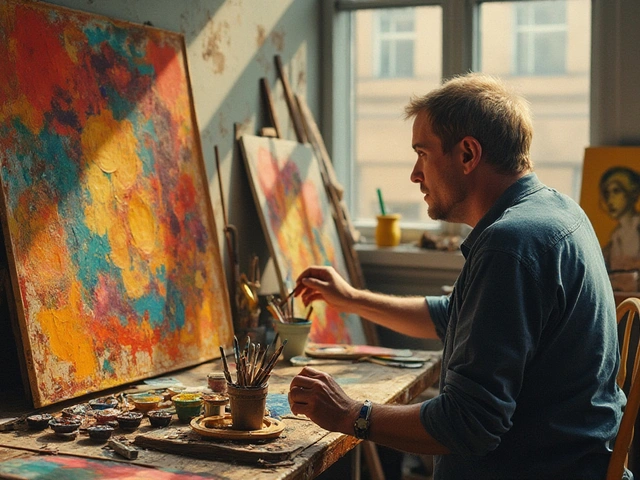Introduction to Suprematism
Just the other day, when I was helping my youngest, Reuben, with his art homework, we began talking about various art movements. Our parrot, Jazzy, squawked in the background, adding his own unique commentary. Suddenly, Reuben threw out a word I hadn't heard much about - Suprematism. Intrigued by this, I decided to dust off my old art history book, sending Scooter, our turtle, into a little slo-mo frenzy. Thus began a deep dive into the Suprematist movement - an art revolution that shaped the 20th century and continues to influence modern design.
Origins and Philosophical Foundations of Suprematism
The seeds of Suprematism, as I found in my research, were sown in Russia around 1915. Its primary mover and shaker was Kazimir Malevich who was driven by the idea that artists should transcend the bounds of reality. Reminiscent of the time Isla and I once tried to assemble a flat-pack furniture without instructions, Suprematism was all about challenging the norms. It was about embracing a new concept of beauty, one that did not conform to the established understanding of reality.
Key Characteristics of Suprematism
Entering Suprematism is just like when you first walk into a pet shop. Remember when we first saw Jazzy? Amid the cacophony of birds, cats, dogs, and exotic critters, he was something we'd never seen before. And boy, did he throw us for a loop! That's exactly what Suprematism did with its geometric shapes floating across an uncaring white background, it was all about non-objectivity. We started to realize the real-world representation wasn't the only way to perceive beauty.
Suprematism's Bold Geometric Artworks
The signature characteristic of Suprematism was stark and bold - it employed geometric shapes, much like Finn's favourite block building games. Though Finn often grumbled about not having enough shapes to recreate the Star Wars spaceships perfectly, he never hesitated to use his imagination. Malevich did the same with Suprematism, making the most of flat geometric shapes: squares, circles, lines, in stark primary colours. His iconic work, the "Black Square", defies typical artistic conventions and resonates with an understated yet powerful beauty.
Iconic Artists of the Suprematist Period
Just like Jazzy has his legion of bird friends, Kazimir Malevich was not alone in his Suprematist endeavors. Other artists, including El Lissitzky, and Ilya Chashnik, joined the ranks, creating compelling works of art that transcended traditional boundaries and resonated with the movement's philosophy.
How Suprematism Influenced the 20th Century and Continues to Inspire Today
It’s fascinating to see how a radical movement like Suprematism ended up shaping and influencing the 20th century. No, it didn’t happen overnight. Just like Jazzy took weeks to mimic my ridiculous rendition of "I Want to Break Free," the acceptance and understanding of Suprematism was a gradual process. Its effect was most prominently seen in architecture, fashion, and graphic design, with its essence being distilled into clean, bold lines and an uncluttered aesthetic. And not to forget, it's even influencing cinematics and game design today: think of the stark spaces in 'Tron' or the minimalistic beauty of Metrocity in 'Wall-E'.
Personal Interpretations
Looking back, I realized how unwittingly, Suprematism was introduced into our everyday lives. Remember the red-and-white checkered tablecloth Isla had fussed over for our last Christmas dinner? Or Finn's fondness for arranging his block toys in strange arrays on the non-descript beige carpet? Even the birdhouse I built for Jazzy echos essence of Suprematism, with the simple geometric design and bold, primary colours.
Conclusion
The world of art, like life itself, is a constantly evolving, disjointed, convoluted, and beautiful mess. It challenges us, much like when Isla challenges me to a game of Scrabble, pushing me into a realm where I have to conjure words I didn't know existed. Suprematism does the same. It dismantles and distorts reality as we know it, urging us to perceive beauty in the unconventional. Just like Jazzy's uncanny ability to mimic the weirdest noises, it serves as a reminder that uniqueness and individuality resonate powerfully in this world. After all, isn't life itself a marvelous, abstract painting, ever-evolving in the artist's mind?




